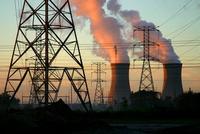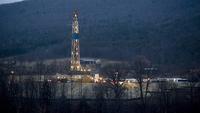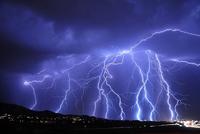-
“Hybrid” nuclear plants could make a dent in carbon emissions

Combining nuclear with artificial geothermal, shale oil, or hydrogen production could help slow climate change, study shows. MIT’s Charles Forsberg proposes marrying a nuclear powerplant with another energy system, which he argues could add up to much more than the sum of its parts.
-
-
Scientists: Shale oil and gas may not be U.S. energy salvation
After ten years of production, shale gas in the United States cannot be considered commercially viable, scientists say. They argue that while the use of hydraulic fracturing and horizontal drilling for “tight oil” is an important contributor to U.S. energy supply, it is not going to result in long-term sustainable production or allow the United States to become a net oil exporter.
-
-
Urban underground water can be used for sustainable energy
Vast energy sources are slumbering below big cities. Sustainable energies for heating in winter and cooling in summer may be extracted from heated groundwater aquifers. Researchers developed an analytical heat flux model and found that increasing heat in the underground is mainly caused by an increase in surface temperatures and heat release from buildings.
-
-
Russia to build floating nuclear power plants

Global warming is opening the Arctic Ocean to shipping – and causing the rapid melting of Arctic ice. Russia says that ship-based nuclear power plants would allow it to provide power to remote cities in Siberia, and provide power to oil and gas drilling operations in the Arctic (about 30 percent of the world’s unclaimed natural gas is in the Arctic, and about, 60 percent of that unclaimed natural gas is in the Russian Arctic). Experts worry about the ability of ship-based nuclear reactor to withstand extreme weather events, or terrorist attacks. The U.S. Army deployed its own floating nuclear reactor – the Sturgis – in the Panama Canal Zone from 1968 to 1976.
-
-
Where should U.S. radioactive waste be buried?
In the United States, about 70,000 metric tons of spent commercial nuclear fuel are located at more than seventy sites in thirty-five states. Shales and other clay-rich (argillaceous) rocks have never been seriously considered for holding America’s spent nuclear fuel, but it is different overseas. France, Switzerland, and Belgium are planning to put waste in tunnels mined out of shale formations, and Canada, Japan, and the United Kingdom are evaluating the idea.
-
-
Burping for power: Tapping cow burps for natural gas
Scientists in Argentina have developed a method to transform the gas created by cows’ digestive systems into fuel. The technique channels the digestive gases from bovine stomach cavities through a tube and into a tank, where the gases, called eruptos (burps) in Spanish, are processed to separate methane from other gases such as carbon dioxide.
-
-
Weatherizing U.S. homes to uniform standard to save $33 billion a year
The U.S. residential sector — 113 million homes — uses about 23 percent of total U.S. source energy annually (source energy includes site energy, the energy consumed by buildings for heating and electricity, as well as the raw energy required to transmit, deliver and produce it). A new study finds that upgrading buildings’ airtightness to a uniform level could achieve as much as $33 billion in annual energy savings.
-
-
U.S. formulates strategy for a new Arctic landscape
U.S. national security officials have become increasingly concerned about the national security implications of an ice-free Arctic. The Arctic will become ice-free during the summer by mid-decade. In a strategy document, the Pentagon says: “Melting sea ice in the Arctic may lead to new opportunities for shipping, tourism, and resource exploration, but the increase in human activity may require a significant increase in operational capabilities in the region in order to safeguard lawful trade and travel and to prevent exploitation of new routes for smuggling and trafficking.”
-
-
U.S. nuclear power industry facing growing challenges
The U.S. nuclear industry is scaling back expectations on the future of the industry, expectations which only a few were soaring. The availability of cheaper energy alternatives, a growing trend toward energy conservation, and renewed safety and health worries as a result of the 2011 Fukushima Daiichi Nuclear Power Plantaccident, are all reasons for why active nuclear plants are being forced to close, and why fewer energy companies are investing in new nuclear plants or upgrading existing ones.
-
-
Renewable fuel standard: mend it, don’t end it
Congress should minimally modify — and not, as petroleum-related interests have increasingly lobbied for, repeal — the Renewable Fuel Standard (RFS), the most comprehensive renewable energy policy in the United States, according to a new paper. The paper argues that RFS mandates merely ought to be adjusted to reflect current and predicted biofuel commercialization realities.
-
-
Sea power: extracting energy from ocean waves

As sources of renewable energy, sun and wind have one major disadvantage: it is not always sunny or windy. Waves in the ocean, on the other hand, are never still. Researchers are now aiming to use waves to produce energy by making use of contact electrification between a patterned plastic nanoarray and water.
-
-
Research investments, growing markets drive rise in energy patents

Innovation in energy technology is booming, according to a new paper which examines what factors set the pace for energy innovation. The study finds that investments in research and development, as well as in the growth of markets for these products, have helped to spur this dramatic growth in innovation.
-
-
Radioactive shale gas contaminants seep into a Pennsylvania creek

Researchers examined the quality of shale gas wastewater from hydraulic fracturing and the stream water above and below the disposal site in western Pennsylvania. Elevated levels of radioactivity, salts, and metals have been found in river water and sediments at a site where treated water from oil and gas operations is discharged into a creek.
-
-
Harnessing lightning power to charge a mobile phone

Scientists from the University of Southampton have collaborated with Nokia on ground-breaking, proof-of-concept research into harnessing the power of lightning for personal use, an industry first that could potentially see consumers tap one of nature’s significant energy sources to charge their devices in a sustainable manner.
-
-
Simulation show geothermal energy potential
Researchers in four countries are using an Idaho National Laboratory (INL) modeling program to simulate the subsurface physics important for geothermal energy extraction. The Fracturing and Liquid CONvection (FALCON) code enables simulation which is faster, simpler, and more comprehensive than previous options. It is helping researchers evaluate geothermal energy site data, and it may soon be able to offer predictions that could help improve geothermal energy output.
-
More headlines
The long view
Trump Is Fast-Tracking New Coal Mines — Even When They Don’t Make Economic Sense
In Appalachian Tennessee, mines shut down and couldn’t pay their debts. Now a new one is opening under the guise of an “energy emergency.”
Smaller Nuclear Reactors Spark Renewed Interest in a Once-Shunned Energy Source
In the past two years, half the states have taken action to promote nuclear power, from creating nuclear task forces to integrating nuclear into long-term energy plans.
